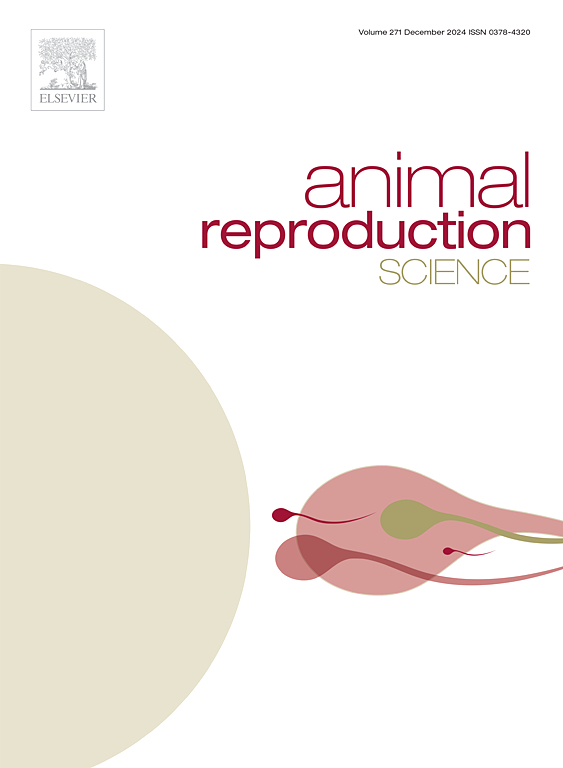IGF-1 outperforms vitamin E and crocin in improving semen quality, antioxidant profile and fertility gene expression in cryopreserved goat (Capra hircus) semen
IF 2.2
2区 农林科学
Q1 AGRICULTURE, DAIRY & ANIMAL SCIENCE
引用次数: 0
Abstract
Semen cryopreservation combined with artificial insemination (AI) benefits germplasm conservation, production, and breeding. Sperm cells are vulnerable to oxidative and other stressors during cryopreservation, necessitating the use of additives/antioxidants to mitigate this damage. This study aimed to evaluate the effects of vitamin E, IGF-1, and crocin supplementation on the quality of cryopreserved goat semen. A total of 48 pooled ejaculates from six goat bucks were diluted in Tris-Citrate-Fructose-Egg Yolk-Glycerol (TCFEYG) extender and divided into four groups: a control group (no antioxidant addition) and groups supplemented with 2 mM vitamin E, 125 ng/mL IGF-1 and 1 mM crocin. The semen samples were cryopreserved in liquid nitrogen (LN2) and analyzed post-thaw for sperm quality attributes, antioxidant enzyme activities and mRNA expression levels. IGF-1 supplementation significantly (P < 0.05) enhanced in vitro sperm quality, and antioxidant enzyme viz., catalase (CAT), glutathione reductase (GR), glutathione peroxidase (GPx), glutathione S transferase (GST) and superoxide dismutase (SOD) compared to other treatments. Lipid peroxidation (LPO) levels were significantly (P < 0.05) lower, and fertility-related mRNA transcripts (NFE2L2, GPx4, CAT, and SOD2) were significantly (P < 0.05) upregulated in the IGF-1 group. No significant (P > 0.05) differences in pregnancy rates were observed among treatments after AI. In conclusion, IGF-1 supplementation significantly improved the post-thaw quality of cryopreserved goat semen, enhancing antioxidant activity and fertility-related mRNA expression compared to vitamin E and crocin treatments.
求助全文
约1分钟内获得全文
求助全文
来源期刊

Animal Reproduction Science
农林科学-奶制品与动物科学
CiteScore
4.50
自引率
9.10%
发文量
136
审稿时长
54 days
期刊介绍:
Animal Reproduction Science publishes results from studies relating to reproduction and fertility in animals. This includes both fundamental research and applied studies, including management practices that increase our understanding of the biology and manipulation of reproduction. Manuscripts should go into depth in the mechanisms involved in the research reported, rather than a give a mere description of findings. The focus is on animals that are useful to humans including food- and fibre-producing; companion/recreational; captive; and endangered species including zoo animals, but excluding laboratory animals unless the results of the study provide new information that impacts the basic understanding of the biology or manipulation of reproduction.
The journal''s scope includes the study of reproductive physiology and endocrinology, reproductive cycles, natural and artificial control of reproduction, preservation and use of gametes and embryos, pregnancy and parturition, infertility and sterility, diagnostic and therapeutic techniques.
The Editorial Board of Animal Reproduction Science has decided not to publish papers in which there is an exclusive examination of the in vitro development of oocytes and embryos; however, there will be consideration of papers that include in vitro studies where the source of the oocytes and/or development of the embryos beyond the blastocyst stage is part of the experimental design.
 求助内容:
求助内容: 应助结果提醒方式:
应助结果提醒方式:


